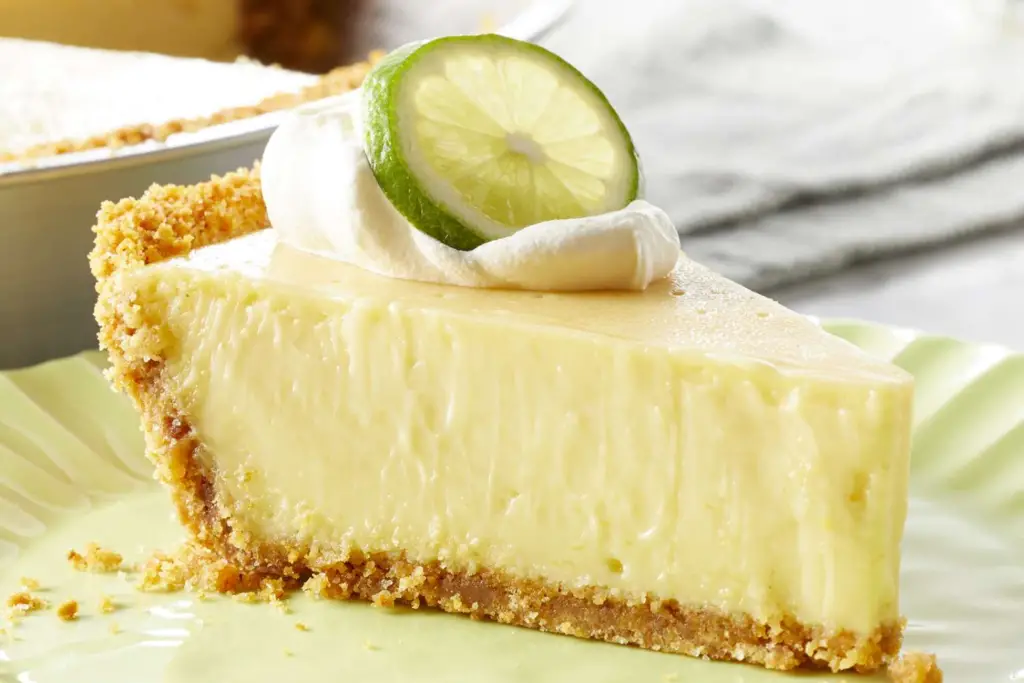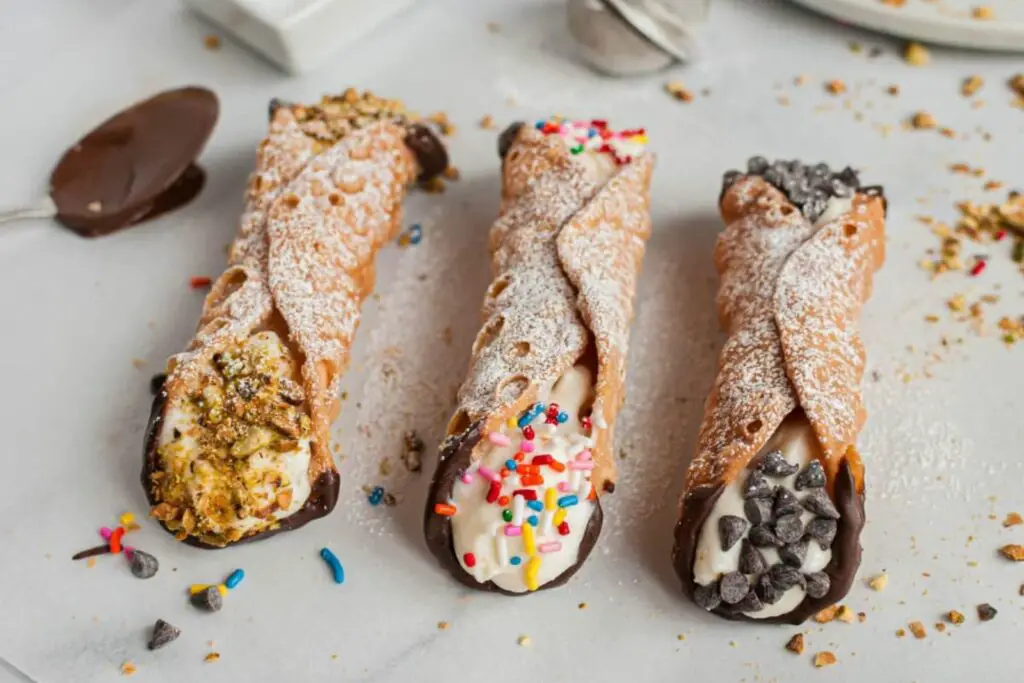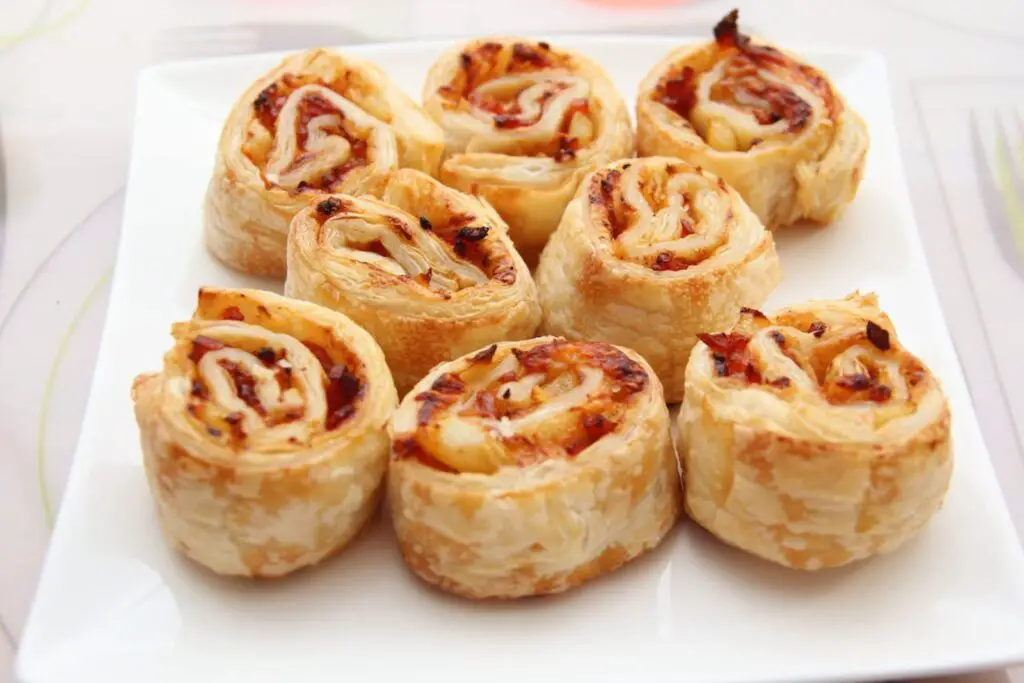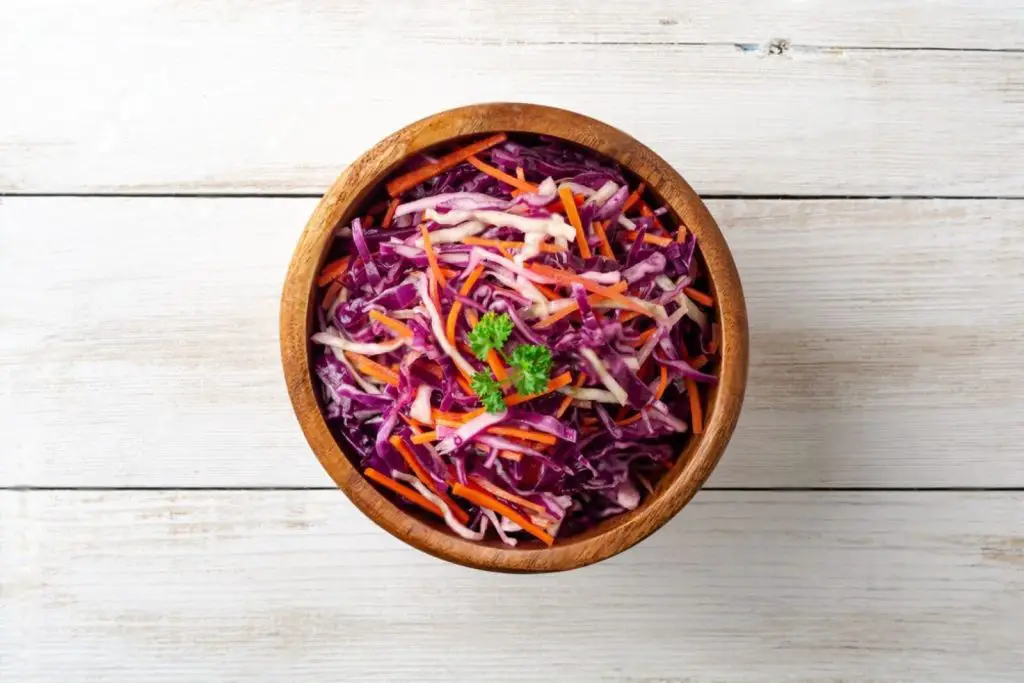
Cornbread, the beloved Southern staple, is a classic bread with a golden crust and a soft, slightly crumbly interior. With its sweet and savory notes, cornbread is a versatile accompaniment to meals, whether served as a side dish, used as a base for stuffing, or enjoyed on its own. Its comforting flavors and hearty texture make it a favorite among bread enthusiasts.
To make meal planning and preparation more convenient, freezing cornbread can be a practical choice. Freezing cornbread not only helps preserve its freshness and flavor but also ensures that you have a quick and easy side dish or snack option readily available whenever you desire the warmth and deliciousness of freshly baked cornbread. In this guide, we will explore the best methods for freezing cornbread, ensuring that you can enjoy its comforting taste and homemade goodness at any time, whether it’s a family dinner or a casual gathering with friends.
Here is a simple guide on how to freeze cornbread:
- Step 1: Allow the cornbread to cool completely
- Step 2: Cut the cornbread into desired portions.
- Step 3: Wrap each portion of cornbread tightly in plastic wrap.
- Step 4: Wrap the plastic-wrapped cornbread again in aluminum foil
- Step 5: Label and date the package
- Step 6: Place the wrapped cornbread in the freezer
Step 1: Allow the cornbread to cool completely
After baking the cornbread, it’s important to allow it to cool down completely before freezing. This step is crucial to prevent condensation from forming inside the packaging, which can ultimately lead to freezer burn.
Freezer burn occurs when the moisture in the food evaporates and then re-freezes on the surface. It manifests as discolored patches, dry texture, and a slightly off taste. To avoid freezer burn and maintain the quality of the cornbread, cooling it down properly is essential.
When cornbread is freshly baked, it retains a significant amount of heat and moisture. If you immediately wrap and freeze it while still hot or warm, the trapped heat and moisture will create condensation inside the packaging. This moisture will then freeze and form ice crystals on the cornbread, resulting in freezer burn.
Allowing the cornbread to cool completely to room temperature, you give the excess heat and moisture a chance to dissipate. This cooling process helps minimize the formation of condensation when the cornbread is wrapped for freezing.
To cool the cornbread, place it on a wire rack or a heat-resistant surface. This allows air to circulate around the bread, promoting faster cooling. Avoid sealing the cornbread in an airtight container or wrapping it immediately, as it can trap the heat and moisture inside.
Step 2: Cut the cornbread into desired portions.
When freezing cornbread, you have the option to either freeze it as a whole loaf or cut it into individual portions before freezing. While both methods are viable, cutting the cornbread into portions offers added convenience when it comes to thawing and serving later on.
Here’s why cutting the cornbread into portions can be beneficial:
- Easy portion control: By cutting the cornbread into individual slices or squares, you have better control over the serving size. This is particularly useful if you anticipate needing smaller portions or if you’re planning to serve the cornbread to a group of people with varying appetites.
- Flexible servings: Freezing cornbread in portions allows you to thaw and serve only the amount you need at a given time. If you’re freezing a whole loaf, you’ll have to thaw the entire loaf even if you only need a few slices. With pre-cut portions, you can defrost and enjoy the desired quantity, reducing potential waste.
- Convenient reheating: When it’s time to enjoy the frozen cornbread, reheating individual portions is simpler and more efficient. You can easily thaw and warm up a single slice in a microwave, toaster oven, or conventional oven without having to defrost and reheat the entire loaf.
- Versatile usage: Having pre-cut portions gives you the flexibility to use the cornbread in different ways. Whether you want to enjoy a slice as a standalone snack, create sandwiches with cornbread as the base, or incorporate it into other recipes, having individual portions allows for greater versatility in its usage.
If you prefer to freeze the cornbread as a whole loaf, ensure that it is properly wrapped and protected to maintain its moisture and quality. However, if convenience and flexibility are important factors for you, cutting the cornbread into portions before freezing is the recommended approach.
Step 3: Wrap each portion of cornbread tightly in plastic wrap.
To wrap the cornbread, place it in the center of a sheet of plastic wrap. Gently pull the edges of the plastic wrap over the cornbread, pressing it against the surface to remove any trapped air. Continue wrapping tightly until the cornbread is completely covered. Be careful to seal all edges and corners to prevent air from entering.
If you are freezing individual portions, it is recommended to wrap each slice separately. This allows for easy retrieval of a single serving without having to thaw the entire batch. For freezing a whole loaf, wrap it as a cohesive unit, ensuring all sides are tightly sealed.
After cutting the cornbread into individual portions or deciding to freeze it as a whole loaf, it’s important to wrap each slice or the entire cornbread tightly in plastic wrap. This step is crucial to maintaining its moisture and preventing freezer burn.
Here’s why wrapping the cornbread tightly in plastic wrap is essential:
- Moisture retention: Cornbread tends to dry out in the freezer due to the cold, dry air. Wrapping it tightly in plastic wrap creates a barrier that helps seal in the moisture within the cornbread, preserving its softness and preventing it from becoming dry and crumbly during freezing.
- Protection against freezer burn: Freezer burn occurs when the moisture within the food evaporates and forms ice crystals on its surface. These ice crystals can lead to a loss of texture, flavor, and overall quality. By tightly wrapping the cornbread, you create a protective layer that reduces the exposure of the bread to the cold air, minimizing the formation of ice crystals and the risk of freezer burn.
- Air exclusion: Properly wrapping the cornbread in plastic wrap helps to exclude air, which contains moisture and can contribute to freezer burn. Ensuring there are no exposed areas or gaps where air can enter is important for maintaining the quality and freshness of the cornbread during freezing.
Step 4: Wrap the plastic-wrapped cornbread again in aluminum foil
After tightly wrapping each portion or the entire cornbread in plastic wrap, the next step is to wrap it again in aluminum foil. This additional layer of protection serves to guard against freezer burn and helps maintain the quality of the cornbread during freezing.
Here’s why wrapping the plastic-wrapped cornbread in aluminum foil is beneficial:
- Enhanced insulation: Aluminum foil provides an extra layer of insulation that helps regulate the temperature around the cornbread. It acts as a barrier, reducing the exposure of the cornbread to fluctuating temperatures and preventing rapid temperature changes that could impact its texture and flavor.
- Protection against air and moisture: Aluminum foil effectively blocks out air and moisture from reaching the cornbread. It forms a tight seal around the plastic-wrapped cornbread, further minimizing the risk of freezer burn caused by the formation of ice crystals and the loss of moisture. By creating a more controlled and protected environment, the aluminum foil helps to maintain the cornbread’s freshness.
- Prevents odors and flavors transfer: Aluminum foil acts as a protective shield against the absorption of odors and flavors from other foods in the freezer. It helps to maintain the integrity of the cornbread’s taste and prevents it from taking on any unwanted smells or flavors.
When wrapping the cornbread in aluminum foil, ensure that it is tightly sealed to prevent air from entering. The corners and edges should be well-folded to create a secure package that maintains the integrity of the cornbread.
Step 5: Label and date the package
After wrapping the cornbread in plastic wrap and aluminum foil, it’s crucial to label and date the package. This simple step allows you to keep track of its storage time and easily identify it in the freezer, ensuring proper rotation and optimal freshness.
Here’s why labeling and dating the cornbread package is important:
- Storage time awareness: By noting the current date on the package, you have a clear reference point for when the cornbread was frozen. This information is essential for managing food safety and quality. It helps you keep track of the recommended storage duration for frozen cornbread, which is generally up to three months, ensuring you consume it within that timeframe for the best taste and texture.
- Easy identification: Labeling the package with a description, such as “Cornbread” or any additional details you find helpful, makes it easier to identify the frozen cornbread in a crowded freezer. Clear labeling helps prevent confusion and allows you to quickly locate the cornbread when you’re ready to thaw and enjoy it.
- Rotation management: If you regularly freeze food items, labeling and dating the cornbread package helps you practice proper rotation. It ensures that older cornbread is used before newer batches, reducing the risk of freezer burn or the cornbread going past its optimal quality.
When labeling the package, use a permanent marker or freezer tape that can withstand freezing temperatures without smudging or falling off. Write the current date prominently on the package and include any additional information you find necessary for easy identification.
Step 6: Place the wrapped cornbread in the freezer
After properly wrapping and labeling the cornbread, the final step is to place it in the freezer. It’s important to select a designated spot that provides a safe and optimal environment for the frozen cornbread.
Here’s why the placement of the wrapped cornbread in the freezer is crucial:
- Preservation and protection: The freezer’s low temperature helps to preserve the quality and freshness of the cornbread by slowing down the growth of microorganisms and enzymes that can lead to spoilage. Placing the wrapped cornbread in the freezer ensures its long-term preservation, maintaining its taste, texture, and overall quality until you’re ready to enjoy it.
- Avoiding damage: Choose a spot in the freezer where the cornbread won’t be crushed or damaged by other items. Ensure that it is placed on a flat surface or a stable location where it won’t get squished or bumped, which can deform or break the cornbread. Protecting the shape and structure of the cornbread is essential for its presentation and enjoyment after thawing.
- Flavor preservation: Store the wrapped cornbread away from strong-smelling foods in the freezer. This helps prevent flavor transfer, as odors from other foods can be absorbed by the cornbread, compromising its taste and aroma. Keeping the cornbread in a designated spot away from pungent or highly aromatic items helps maintain its distinct flavor profile.
Remember to close the freezer door tightly and avoid frequent opening, as temperature fluctuations can affect the quality of the frozen cornbread.
How long can I store frozen cornbread?
When properly stored, frozen cornbread can be stored for up to three months without significant loss in quality. It is important to adhere to this timeframe to ensure optimal taste and texture upon thawing. Beyond three months, the cornbread may still be safe to eat, but there is a higher likelihood of it developing freezer burn or losing its original flavor and texture. To maximize the freshness and quality, it is recommended to consume the frozen cornbread within the three-month timeframe.
Other related questions
How do I thaw frozen cornbread?
Thawing frozen cornbread is a simple process that can be done in a few different ways. The recommended method is to transfer the wrapped cornbread from the freezer to the refrigerator and let it thaw slowly overnight. This gradual thawing helps preserve the moisture and texture of the cornbread. Alternatively, you can thaw individual slices or portions in the microwave using the defrost setting, or place the wrapped cornbread at room temperature for a couple of hours until fully thawed. Once thawed, you can reheat the cornbread in an oven or microwave if desired.
Can I refreeze cornbread after it has been previously thawed?
It is generally not recommended to refreeze cornbread after it has been thawed. Freezing and thawing can affect the texture and quality of the cornbread, and refreezing it further deteriorates its taste and texture. The process of freezing and thawing causes moisture loss, leading to potential dryness and loss of flavor. To maintain the best quality, it is advisable to consume the cornbread after the initial thawing and avoid refreezing it.
How do I know if my frozen cornbread has gone bad?
To determine if your frozen cornbread has gone bad, examine its appearance, smell, and texture. If you notice any signs of mold growth, significant freezer burn, or an off-putting odor, it is likely spoiled. Additionally, if the texture is excessively dry, crumbly, or has an unusual consistency, it may indicate spoilage. When in doubt, it is best to discard the cornbread to avoid any potential foodborne illnesses.
Can I use frozen cornbread with the fresh ones?
Yes, you can use frozen cornbread alongside fresh ones, but there are some considerations. Thaw the frozen cornbread completely before using it. While the taste and texture may differ slightly from fresh cornbread, it can still be enjoyed. You can incorporate frozen cornbread into recipes like cornbread stuffing or crumble it into breadcrumbs for various culinary applications. Mixing fresh and frozen cornbread can provide a convenient way to utilize leftovers or extend the availability of this delicious treat.
Can I freeze cornbread batter instead of baking it first?
It is generally not recommended to freeze cornbread batter before baking it. Freezing batter can alter its consistency and affect the final texture of the cornbread. The leavening agents in the batter may lose their effectiveness during the freezing and thawing process, resulting in a less desirable outcome. It is best to bake the cornbread first, allow it to cool completely, and then freeze the fully baked cornbread for optimal results. This ensures that the cornbread retains its intended texture and flavor when thawed and reheated.
Can I freeze cornbread with added ingredients like cheese or vegetables?
Yes, you can freeze cornbread with added ingredients like cheese or vegetables. However, it’s important to consider the specific ingredients. Certain cheeses, such as soft or creamy varieties, may not freeze well and can result in a change in texture. Vegetables should be properly cooked and cooled before adding them to the cornbread to ensure they retain their quality during freezing. It’s recommended to wrap the cornbread tightly in plastic wrap and aluminum foil to prevent moisture loss and protect the added ingredients.
Can I freeze cornbread that has already been seasoned or flavored?
Yes, you can freeze cornbread that has already been seasoned or flavored. The seasoning and flavors will generally hold up well during the freezing process. However, keep in mind that some flavors may mellow or intensify slightly after freezing. It’s advisable to taste a small portion of the seasoned cornbread after thawing to ensure the flavors are to your liking. If necessary, you can always adjust the seasonings or add additional flavors after thawing to enhance the taste according to your preference.








